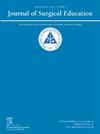Impact of Subsequent Fellowship on Urology Chief Resident Case Log Volumes
IF 2.6
3区 医学
Q1 EDUCATION, SCIENTIFIC DISCIPLINES
引用次数: 0
Abstract
OBJECTIVE
To characterize the impact of subsequent fellowship on the case log experience of trainees throughout their residency and specifically their chief resident year.
MATERIALS AND METHODS
Urology resident case logs from 2010 to 2022 were obtained from 13 institutions for total residency and chief years. Five categorized index procedures were included for analysis: General Urology; Endourology; Reconstructive Urology; Urologic Oncology; and Pediatric Urology. Subsequent fellowship data (yes/no and type) were available for 338. Regression models analyzed the interactions of case log volumes and subsequent fellowship
RESULTS
Of the 338 residents, 141 (42%) went onto practice and 197 (58%) completed a fellowship including 53 in oncology, 44 in reconstruction, 43 in endourology, 29 in pediatric, and 28 in another nonindexed domain. A total of 419,353 cases were logged during training, including 125,319 (30%) during the chief resident year. The median number of total cases completed per resident increased irrespective of subsequent fellowship. Conversely, the median number of total cases completed during chief year declined with the slope of decline being significant in those residents not completing a fellowship [slope = −2.44, CI: (−4.66, −0.23), p-value = 0.031]. Temporal trends demonstrated that absence of subsequent fellowship was associated with decrease in chief resident cases across all index domains (p for all < 0.001). The specific type of fellowship, however, had no association with chief year trends.
CONCLUSIONS
The median number of chief resident cases has declined, most significantly in those trainees not pursuing a fellowship, possibly reflecting a focus on urology encounters which are not captured in ACGME logs.
求助全文
约1分钟内获得全文
求助全文
来源期刊

Journal of Surgical Education
EDUCATION, SCIENTIFIC DISCIPLINES-SURGERY
CiteScore
5.60
自引率
10.30%
发文量
261
审稿时长
48 days
期刊介绍:
The Journal of Surgical Education (JSE) is dedicated to advancing the field of surgical education through original research. The journal publishes research articles in all surgical disciplines on topics relative to the education of surgical students, residents, and fellows, as well as practicing surgeons. Our readers look to JSE for timely, innovative research findings from the international surgical education community. As the official journal of the Association of Program Directors in Surgery (APDS), JSE publishes the proceedings of the annual APDS meeting held during Surgery Education Week.
 求助内容:
求助内容: 应助结果提醒方式:
应助结果提醒方式:


